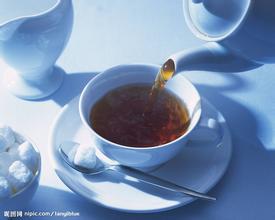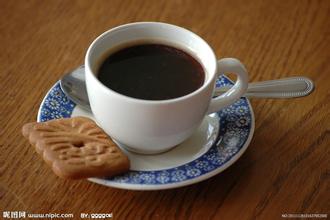Which kind of coffee is more suitable for blending fine coffee? can I mix it?
In fact, there is no answer to the question of which is better, individual beans or mixed coffee beans. We can only say which kind of coffee is more suitable for you, which should be determined by combining the coffee utensils and taste preferences used by individuals. Just like the blended coffee beans [vanishing Shangri-La] in our store, although we advocate that the performance will be more comprehensive under the Italian machine, however, many friends love the performance of this bean under the siphon pot or hand extraction, although some fixed varieties of coffee can be drunk directly as a single coffee, but most of the coffee has more or less defects in flavor. For example, there is no special flavor, lack of depth, not strong enough or a certain flavor is too strong. In order to make up for these deficiencies, it is necessary to combine several kinds of coffee beans with different characteristics to create a harmonious and deep flavor. Some people think that the fun of coffee is focused on baking and blending, while drinking coffee is just enjoying the fruits of your own victory. Blending coffee is not a random mix of coffee beans. Sometimes the blending of two kinds of boutique coffee will suppress each other's unique flavor, so blending is not simply blending several kinds of boutique coffee together. Matching is just like a painter adjusting and creating charming colors in a palette, so the mixer can also blend with coffee beans to produce an attractive flavor. Therefore, it is not too much to say that matching is an art, and as an artist, the assembler not only needs experience.
And inspiration, but also through a certain amount of scientific calculation. The emergence of works of art will not be accidental, but the outbreak of long-term accumulation. The average blended coffee does not need to use more than five kinds of coffee beans. Because if there are too many kinds of coffee beans, the situation can be very complicated. Almost only a very special expert would not be confused by so many different coffee beans. Is the relationship between matching and baking baking before blending, or is the relationship between matching and baking first? Which way is better? If you have a definite recipe, of course the easiest way is to put different coffee beans together and then bake them together. But if you are trying and comparing different ingredients and proportions, you certainly want to bake all kinds of coffee beans before trying. Otherwise, every time you change the composition and proportion of the mix, you need to bake it again. For "Vienna Coffee" (Melange) blending and small test blending, it is more suitable for independent roasting. For example, when a small amount of "Rob Coffee" needs to be added in a trial mix, the required "Rob Coffee" is the most suitable for independent roasting. Some coffee is denser or changes in volume before and after roasting, and these beans are roasted differently from "washed" Arabica coffee. Arabica Coffee processed by the "drying method" is baked at a higher temperature. But in most cases, all kinds of coffee beans can be roasted together. In general, all coffee beans can be roasted together. You need to consider using independent baking only when the baking effect is not ideal. At this time, independent baking can usually achieve better results. Especially for drum roaster, a relatively moderate baking degree can be found in general. But some individual coffee beans are not easy to bake evenly. For example, Yemeni coffee, Ethiopian DP coffee beans, and so on. Uneven baking color is not a defect. Only "washed" Arabica coffee needs to be roasted evenly.

Important Notice :
前街咖啡 FrontStreet Coffee has moved to new addredd:
FrontStreet Coffee Address: 315,Donghua East Road,GuangZhou
Tel:020 38364473
- Prev

Will the blending of boutique coffee suppress each other's unique flavor?
Why match it? Although some fixed varieties of coffee can be drunk directly as individual coffee, most of the coffee has more or less defects in flavor. For example, there is no special flavor, lack of depth, not strong enough, or a certain taste is too strong. In order to make up for these deficiencies, it is necessary to combine several kinds of coffee beans with different characteristics to create
- Next

Introduction to the blending method of Italian Coffee and single Coffee
Indonesia AP-1 is located in Java, Indonesia, robusta coffee, sweat-resistant and insect-resistant; bitter taste, but bitter with fragrance, especially after cooling with a unique sweet taste, suitable for the preparation of cold coffee, is mellow and extremely bitter. Tanzania Kilimanjaro Tanzania Chag AA Coffee (Chagga AA) is famous for its full-grained and fragrant quality. Brazilian texture
Related
- Does Rose Summer choose Blue, Green or Red? Detailed explanation of Rose Summer Coffee plots and Classification in Panamanian Jade Manor
- What is the difference between the origin, producing area, processing plant, cooperative and manor of coffee beans?
- How fine does the espresso powder fit? how to grind the espresso?
- Sca coffee roasting degree color card coffee roasting degree 8 roasting color values what do you mean?
- The practice of lattes: how to make lattes at home
- Introduction to Indonesian Fine Coffee beans-- Java Coffee producing area of Indonesian Arabica Coffee
- How much will the flavor of light and medium roasted rose summer be expressed? What baking level is rose summer suitable for?
- Introduction to the characteristics of washing, sun-drying or wet-planing coffee commonly used in Mantenin, Indonesia
- Price characteristics of Arabica Coffee Bean Starbucks introduction to Manning Coffee Bean Taste producing area Variety Manor
- What is the authentic Yega flavor? What are the flavor characteristics of the really excellent Yejasuffi coffee beans?

